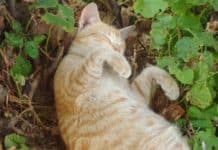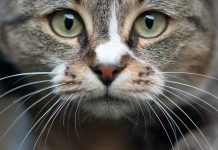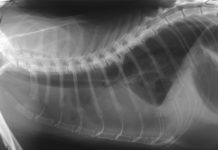A lot of dogs deserve the name –chowhound, while some cats are precisely named as fussy eaters. However, if a cat is not eating altogether, it may be experiencing anorexia or what is also called the pseudo anorexia. Both anorexia in cats and pseudo anorexia may be life-threatening. This is especially true when the cat goes out of food for several days. That is the reason why vets urge to pay close attention to the eating habit of a cat, most especially if the cat won’t actually eat. Not to confuse you, anorexia in cats is different from the anorexia nervosa in humans. In fact, in cats, the condition is almost always because of a physiologic and organic trigger. Get to learn more about this condition in cats –read on to this article!
Anorexia in Cats: What is this?
In the actual fact, anorexia in cats is a reduces, or even loss of appetite. Furthermore, it happens in cats who want to eat, but is not capable to do so physically. This occurs for several reasons including the following:

- Inability to swallow
- Inability to chew
- Failure to put food in the mouth
- Mouth pain
Moreover, anorexia nervosa is a complex mental condition that is also known as hepatic lipidosis. Essentially, fat infiltrates the liver and may cause total liver failure, as well as death.
This particular condition is dangerous to the health of a cat. After all, brusquely stop in eating, no matter what the causes are, is not really a good thing. In just several days of not eating, the condition may occur already. The obese or overweight cats are the ones at greater risk. Furthermore, a sudden reduction in the appetite or an entire cessation of eating must always be considered a crisis in cats.
Causes of Anorexia or Pseudo Anorexia
The causes of anorexia in cats are as follows:
- Scars on the mouth or head
- Tumors or cancer on the throat and mouth
- Nervous system condition, which affects the swallowing or chewing
- Salivary gland disease
- Temporomandibular joint pain
- Fractured or loose teeth that makes eating more painful
- Advanced periodontal disease
- Esophagitis gingivitis, and/or stomatitis, which are all in relation to pain and inflammation in the tissues of the throat and mouth
Moreover, cats are great at hiding their own problems, which cat owners should maintain vigilance about even the simplest of the issues. Any change in the behavior is worth noting. However a change in the appetite may be an indication of a critical issue.
Some other causes of anorexia in cats include:
- Diabetes
- Pancreatitis
- Kidney disease
- Cancer
- Fever
- Inflammatory bowel disease
- Inability to smell
- Development of ulcers on the intestines of stomach
- Immune system imbalances
- Toxins exposure
- Aversion to foods if a cat feels sick and efforts are made in trying to force-feed the cat
- Changes in the environment, which cause stress in the cat. This includes home remodeling, etc.
- Pain ubiquitously in the body
- Reaction to medication
What to do when your cat won’t eat?
Here are some things that you should do when your cat won’t eat or have anorexia:

- Do not hide medications on its food. If you are going to make your cat drink a medication, do not hide it on its food. There are some medications that come in flavors, which appeal to the cats, but there are also some that are not. You must ask your vet first before trying to trick your cat.
- Try to use different cat dishes. If your cat is not eating, it may just dislike the bowl. There are some cats what don’t like narrow or deep dishes because they constrict to their whiskers. Brachycephalic or flat-faced cats like Exotic shorthairs, Persians, and Himalayans must not eat from plates or shallow food bowls.
- Keep their bowls and dishes clean all the time. This is so important when your cat eats raw or canned food as the germs may start to grow in the scraps or leftovers and may cause conditions. A cat that is not eating may have the smell of its food or dishes, replace them with ceramic or metal as they are much easier to keep clean.
- Try adding something tasty to its food. You may try to sprinkle some tempting treats like cat vitamin powder or bonito flakes on the cat’s food.
- Heat it up. If you keep your cat’s food on the fridge, you can heat it up for 5-10 seconds, as long as it reaches the ideal body heat temperature. As well as the smell already becomes attractive to the cat.
Final Words
If the appetite of your cat stays lackluster after a several days, it may be tailored with an esophagostomy tube. This particular e-tube is actually a feeding tube that goes into the skin at the side of the neck close to the chin. Further, it extends through the esophagus. Moreover, it is safe in place with the use of sutures and a protective bandage is placed all over the neck. This particular tube is what allows pet owners and vets to feed cats without stressing them. If you find it strange for your cat not eating, go and pay your vet a visit.









